Le ski freeride consiste à s'aventurer hors des pistes damées dans la poudreuse vierge, sur des pentes raides et des terrains montagneux accidentés. Pour relever ces défis, il faut le bon équipement. Les skis freeride sont plus longs et plus larges que les skis classiques, conçus pour flotter sur la poudreuse et affronter des conditions variées. Mais un nouveau venu bouscule les codes : Snowfeet*. Ces alternatives compactes et portables (comme le Snowfeet POWDER de 99 cm) apportent agilité et facilité au ski freeride sans l'encombrement des skis traditionnels.
Pourquoi Snowfeet* se démarque :
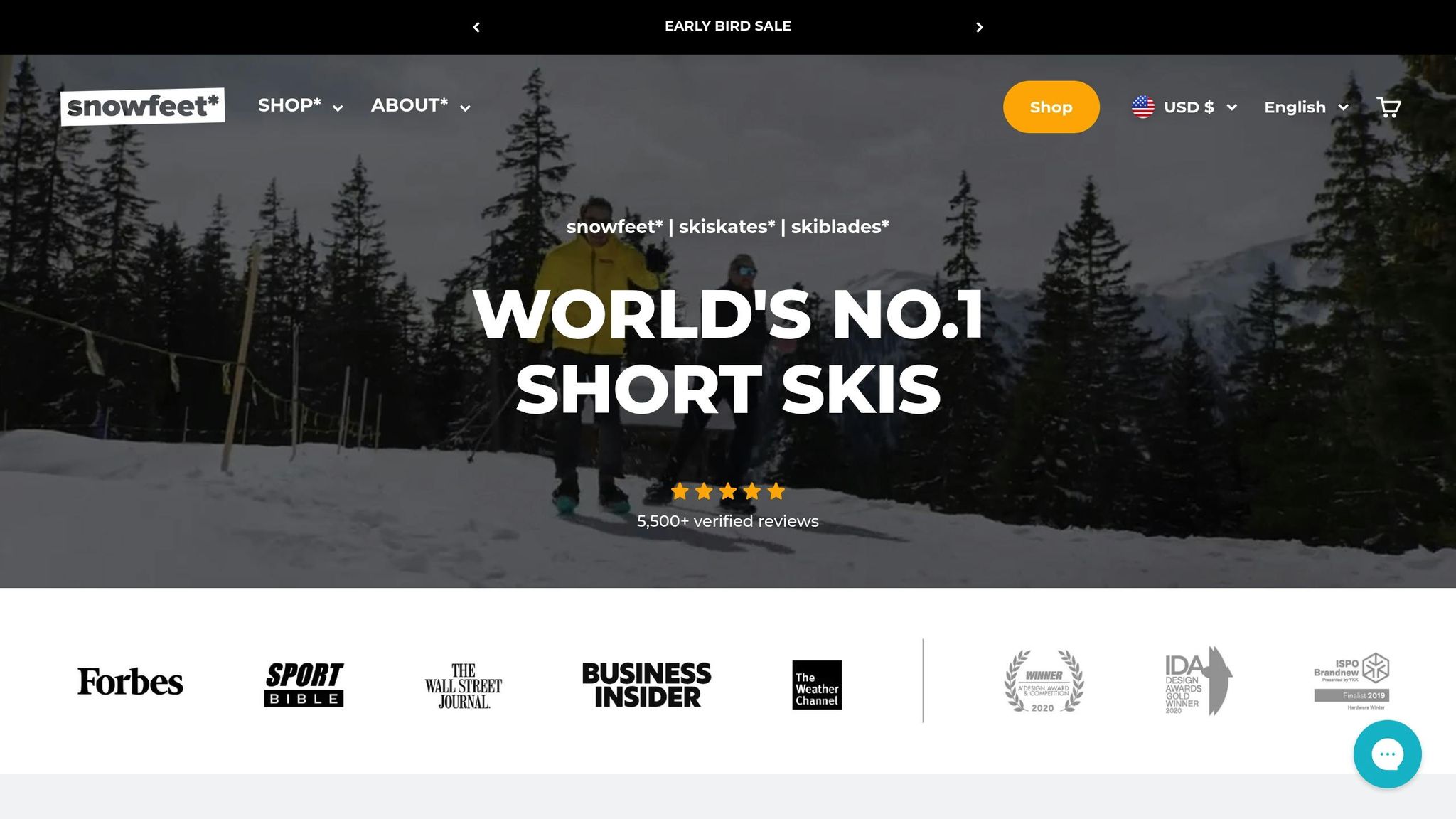
- Compact & Portable : Se glisse dans un sac à dos, contrairement aux skis encombrants.
- Abordable : À partir de 150 $ contre plus de 800 $ pour les équipements standards.
- Facile à utiliser : Rapide à apprendre, adapté aux débutants comme aux experts.
- Polyvalent : Gère la poudre, les arbres et les terrains mixtes sans effort.
Snowfeet* rend le ski freeride plus accessible et amusant, offrant une manière plus légère et simple de profiter des montagnes. Que vous soyez un skieur expérimenté ou débutant, ces skis compacts valent le détour.
Meilleurs skis Big-Mountain et Freeride de 2023-2024 | Powder7 Guide d'achat
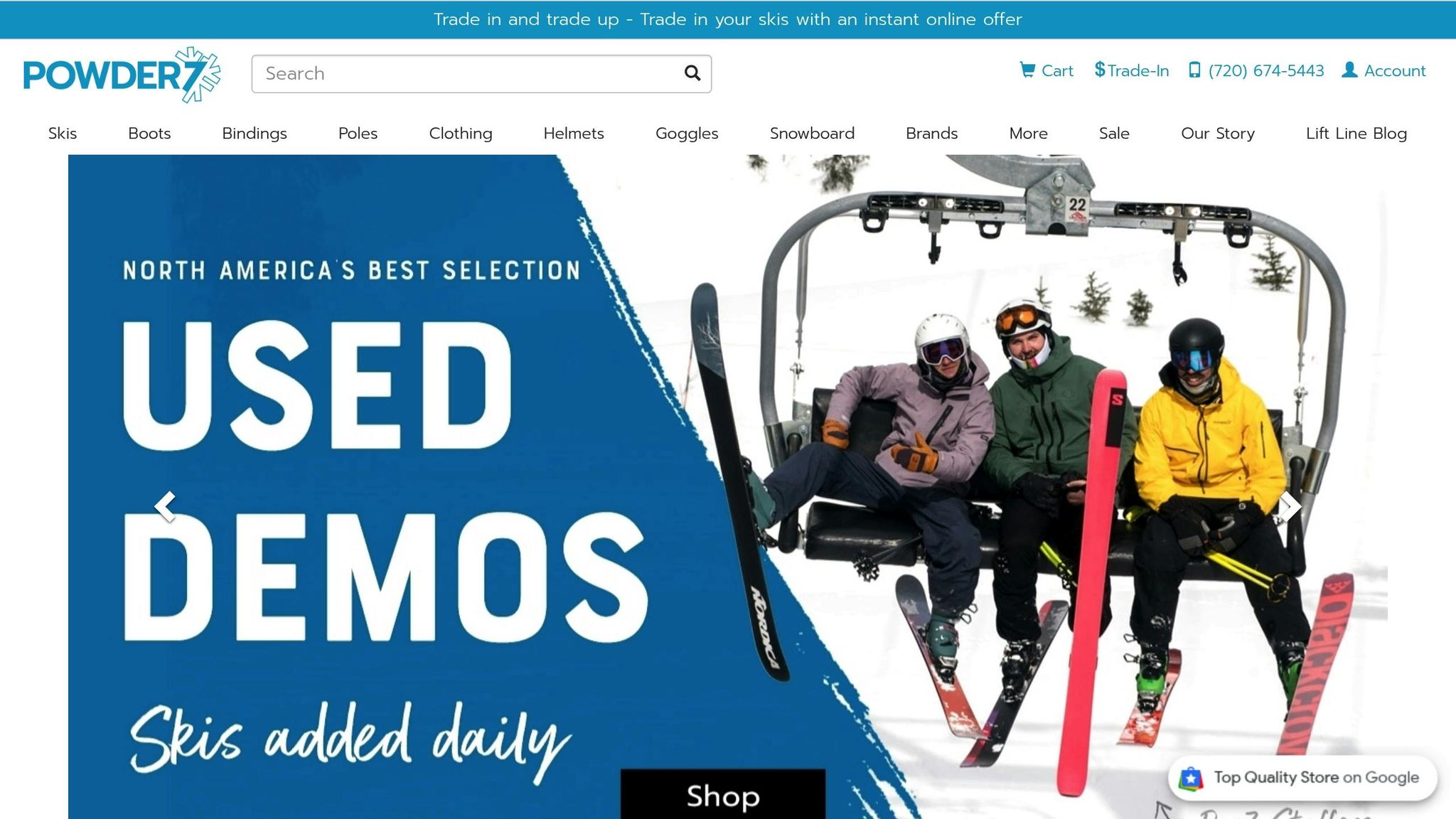
Skis Freeride vs. Skis traditionnels et Snowboards
Choisir le bon équipement signifie comprendre les différences entre skis freeride, skis alpins et snowboards. Décomposons comment ces designs se comparent et ce qui les distingue.
Comment sont construits les skis freeride
Les skis freeride sont conçus pour gérer la poudreuse profonde et les terrains accidentés. Avec des largeurs au patin allant de 100 à 130 mm, ils sont faits pour flotter sans effort dans la neige molle. Ils disposent aussi d’un rocker à l’avant et à l’arrière pour rendre les virages plus fluides et faciles. Pour affronter des conditions rocheuses et inégales, ces skis sont robustes, combinant souvent des noyaux en bois avec des renforts en fibre de carbone ou en métal pour plus de réactivité et de durabilité.
Mais il y a un hic. Ce design large et long peut sembler encombrant dans les espaces restreints, et les transporter n’est pas une mince affaire. Ils demandent un espace de rangement supplémentaire et peuvent être difficiles à transporter. Les produits Snowfeet*, cependant, relèvent ces défis de front avec un design compact et facile à gérer.
Skis Freeride vs. Skis Alpins classiques
Les skis alpins sont les favoris pour les pistes damées en station. Ils sont plus étroits, avec des largeurs au patin de 70–90 mm, et ont généralement un profil cambré complet pour une excellente accroche sur neige dure. Mais en ce qui concerne la poudreuse profonde, leur profil fin joue contre eux - ils ont tendance à s'enfoncer.
C'est là que les produits Snowfeet* brillent. Prenez par exemple le Snowfeet POWDER. Avec seulement 99 cm de long, il est compact tout en offrant une performance impressionnante en poudre, rivalisant avec les skis freeride longs traditionnels. De plus, contrairement à ces skis freeride encombrants qui nécessitent des barres de toit ou des sacs à skis surdimensionnés, le matériel Snowfeet* se glisse facilement dans un sac à dos, parfait pour s'aventurer hors des sentiers battus.
Skis Freeride vs. Snowboards
Les snowboards sont conçus pour les jours de poudreuse, grâce à leur large surface (250–270 mm) et leur position latérale. Ils mesurent généralement entre 150 et 165 cm et offrent une glisse fluide, semblable au surf, dans la neige profonde. Mais ils ont leurs particularités. Les snowboards peuvent être frustrants sur les traversées plates et difficiles à manœuvrer dans des espaces étroits, comme en slalom entre les arbres.
Les skis freeride, en revanche, sont plus polyvalents. En utilisant des bâtons et un mouvement indépendant des jambes, les skieurs peuvent naviguer sur des terrains variés avec un meilleur équilibre et contrôle. Pourtant, les skis freeride traditionnels peuvent sembler encombrants dans certaines situations.
Voici les produits Snowfeet*. Ils combinent le meilleur des deux mondes - la flottaison et la performance en POWDER d'un snowboard avec l'agilité des skis. Le Snowfeet POWDER (99 cm) offre des virages rapides et précis tout en maintenant une excellente flottaison dans la neige profonde. Contrairement aux skis freeride longs qui nécessitent des virages larges et amples, le matériel Snowfeet* est agile et facile à manier, même dans des espaces restreints.
| Type d'équipement | Longueur | Largeur au patin | Idéal pour | Limitation principale |
|---|---|---|---|---|
| Skis Freeride traditionnels | 180–190 cm | 100–130 mm | Grandes lignes de montagne, poudreuse profonde | Encombrants, lourds ; difficiles à transporter |
| Skis alpins | 160–180 cm | 70–90 mm | Pistes damées, carving | Difficile en poudreuse |
| Snowboards | 150–165 cm | 250–270 mm | Poudreuse, ride en park | Gênants sur le plat ; difficiles dans les remontées mécaniques |
| Snowfeet* POWDER | 99 cm | - | Performance en poudreuse avec maniabilité | Inconvénients minimes ; compacts et portables |
Les produits Snowfeet* réécrivent les règles. Ils offrent des performances en poudreuse sans encombrement, facilitent les virages serrés, et sont si portables qu'ils ouvrent l'accès à des terrains vierges. C'est une nouvelle approche de l'équipement de montagne difficile à ignorer.
L'avantage Snowfeet* : des options portables pour le freeride et la poudreuse
Quand transporter des skis traditionnels ressemble à un entraînement avant même de dévaler les pistes, Snowfeet* intervient avec une solution révolutionnaire. Ces alternatives compactes offrent des performances sérieuses dans un design portable, un rêve pour les passionnés de poudreuse.
Qu'est-ce que les Skiblades et Skiskates Snowfeet* ?
Snowfeet* a révolutionné l'équipement des sports d'hiver, proposant des options qui défient les normes du ski. Leurs Skiblades sont disponibles en longueurs de 65 cm et 99 cm, tandis que les ultra-compacts Skiskates mesurent seulement 44 cm. Si vous rêvez de POWDER profond, le Snowfeet POWDER (99 cm) est conçu pour offrir une excellente portance avec une agilité parfaite pour slalomer entre les arbres.
Le meilleur ? Vous n'avez pas besoin de chaussures ou fixations spécialisées. L'équipement Snowfeet* est compatible avec des chaussures d'hiver classiques, des boots de snowboard ou des chaussures de ski. Cela signifie moins de tracas et plus de temps sur la montagne. Par exemple, le Snowfeet POWDER offre la stabilité et le contrôle nécessaires dans la neige profonde tout en étant assez agile pour affronter des pistes étroites et techniques qui mettraient les skis traditionnels en difficulté.
Et ne pensez pas que ce ne sont que des « mini-skis ». Les produits Snowfeet* sont conçus avec une construction en bois massif dans leurs modèles professionnels, garantissant qu'ils sont assez robustes pour un usage intensif. Leur longueur plus courte ne signifie pas moins de qualité - cela signifie une meilleure maniabilité et un accès à des terrains que les skis plus longs ne peuvent tout simplement pas gérer. Ce design ouvre la porte à de sérieux avantages.
Pourquoi Snowfeet* se démarque
Les produits Snowfeet* offrent une liste d'avantages qui en font un choix remarquable pour les skieurs cherchant à simplifier leur équipement tout en maximisant leur temps sur la montagne.
- Portabilité : Oubliez la galère de transporter un équipement encombrant. Les produits Snowfeet* tiennent dans un sac à dos, ce qui les rend faciles à emporter partout où l'aventure vous appelle. Comparez cela aux skis freeride traditionnels de marques comme K2 ou Salomon, qui nécessitent souvent des porte-skis spécialisés.
- Abordabilité : À partir de 150 $ pour les Mini Ski Skates et 490 $ pour le Snowfeet POWDER professionnel, ces options coûtent une fraction du prix des setups freeride haut de gamme. Les skis traditionnels de marques comme Atomic ou Rossignol peuvent facilement dépasser 1 200 $ en incluant fixations et chaussures.
- Facilité d'utilisation : Apprendre à utiliser l'équipement Snowfeet* est rapide et intuitif. Contrairement aux skis freeride traditionnels, qui peuvent prendre des saisons à maîtriser, vous taillerez des virages en toute confiance en quelques heures. Leur longueur plus courte rend l'équilibre et le contrôle naturels, pas intimidants.
- Polyvalence : les produits Snowfeet* fonctionnent sur pistes damées, dans le POWDER, entre les arbres, et même dans votre jardin. Bonne chance pour faire ça avec un ski freeride de 185 cm ou un snowboard - ils ne sont tout simplement pas conçus pour ce genre de flexibilité.
La philosophie Snowfeet* : pourquoi les skis plus courts ont du sens
La pensée traditionnelle autour des skis plus longs concerne la stabilité et la vitesse. Mais dans des espaces restreints ou des conditions de neige variables, les skis longs peuvent donner l'impression d'essayer de tourner un paquebot. Snowfeet* adopte une approche différente, prouvant que les skis plus courts apportent plus de liberté et de plaisir à votre glisse.
Les skis plus courts, comme le Snowfeet POWDER 99 cm, excellent en réactivité et contrôle. Ils permettent des virages rapides et précis qui nécessiteraient des manœuvres larges et amples sur des skis traditionnels de plus de 180 cm. Cette agilité facilite la navigation sur des terrains difficiles - comme les passages entre les arbres ou les couloirs étroits. Pendant ce temps, les skieurs sur des skis freeride plus longs de marques comme Dynastar ou Blizzard peinent à suivre.
Il y a aussi un avantage physique. Les skis plus courts sont plus faciles à contrôler, ce qui signifie qu'il faut moins d'énergie pour naviguer sur les pistes. À la fin de la journée, vous vous sentirez énergisé plutôt qu'épuisé - un contraste frappant avec la « brûlure des jambes » souvent ressentie avec les équipements traditionnels.
Au cœur de Snowfeet*, il s'agit de redonner la joie au ski. Les fondateurs Zbynek et Michael ont construit la marque sur la conviction que le ski doit être simple, amusant et accessible. Leurs produits prouvent que parfois les meilleures idées ne consistent pas à ajouter de la complexité mais à l'éliminer. Avec Snowfeet*, vous obtenez une option légère, portable et polyvalente qui vise à profiter pleinement de la glisse.
sbb-itb-17ade95
Choisir le bon équipement pour la grande montagne et le POWDER : Snowfeet* vs. marques traditionnelles
Quand il s'agit de s'équiper pour le ski de grande montagne et le POWDER, faire le bon choix peut avoir un impact significatif sur votre expérience. Les produits Snowfeet* apportent une perspective nouvelle, offrant une alternative unique aux skis et snowboards traditionnels. Décomposons les facteurs clés - terrain, rangement, exigences physiques et budget - pour vous aider à décider ce qui convient le mieux à vos aventures.
Ce qu'il faut considérer lors du choix de l'équipement freeride
Compatibilité avec le terrain
Les skis freeride traditionnels de marques comme Völkl ou Head sont conçus pour les grands bowls ouverts et les pistes damées. Cependant, ils peuvent sembler lourds dans les passages étroits en forêt ou lors de la navigation sur une neige imprévisible. Si votre objectif est d'explorer tout, des champs de POWDER doux aux couloirs étroits, vous voudrez un équipement qui s'adapte parfaitement aux conditions changeantes.
Transport et stockage
Soyons honnêtes - les équipements traditionnels sont encombrants. Entre les skis, les bâtons et les chaussures, c'est un casse-tête logistique pour le stockage et le transport. Cela peut freiner les sorties spontanées en hors-piste.
Courbe d'apprentissage et exigences physiques
Les skis freeride demandent des jambes solides et une bonne technique, surtout lors de la transition des pistes damées à la POWDER profonde. Pour les débutants ou ceux qui cherchent un équipement moins exigeant physiquement, cela peut représenter un défi.
Considérations budgétaires
Un équipement freeride traditionnel - complet avec skis, fixations, chaussures et bâtons - s'accompagne souvent d'un prix élevé. De plus, il faut prendre en compte les coûts d'entretien et de réparation, qui peuvent vite s'accumuler.
Snowfeet* vs. Skis Freeride traditionnels et Snowboards
Voici une comparaison rapide côte à côte pour montrer comment Snowfeet* se mesure aux options traditionnelles :
| Facteur | Produits Snowfeet* | Skis Freeride traditionnels | Snowboards traditionnels |
|---|---|---|---|
| Portabilité | Design compact qui tient dans un sac à dos (38–120 cm) | Nécessite un porte-toit ou un sac à skis | Encombrant, nécessite un transport supplémentaire |
| Fourchette de prix | $150–$690 | À partir d'environ 800 $+ | 400 $–1 200 $ |
| Polyvalence du terrain | Parfait pour les espaces restreints et les terrains variés | Idéal pour les espaces ouverts | Excelle sur les larges pistes, moins agile dans les passages étroits |
| Exigence physique | Faible à modérée | Généralement plus élevée | Modérée à élevée |
| Compatibilité des boots | Compatible avec toutes les chaussures d'hiver | Nécessite des chaussures de ski spécialisées | Nécessite des boots de snowboard dédiées |
Performance en POWDER
Quand il s'agit de POWDER, les skis traditionnels plus longs sont excellents pour flotter sur la neige profonde mais peuvent être maladroits dans les passages étroits ou techniques. Snowfeet* POWDER (99 cm) trouve un équilibre - il est assez court pour rester agile tout en offrant assez de portance pour glisser en douceur sur la neige plus molle. Cela en fait une option fantastique pour les descentes en forêt et les terrains étroits.
Exigences d'entretien
Les skis traditionnels nécessitent un entretien professionnel régulier, un affûtage des carres et des réparations de la semelle pour rester en parfait état. En revanche, les produits Snowfeet* demandent peu d'entretien. Un simple fartage suffit généralement pour maintenir leurs performances.
Pourquoi Snowfeet* est le meilleur choix pour les skieurs aventuriers
Le matériel Snowfeet* se distingue pour plusieurs raisons, en faisant un choix judicieux pour ceux qui aiment explorer les montagnes.
Liberté d'explorer
Avec leur design compact, les produits Snowfeet* se transportent facilement dans un sac à dos, vous permettant d'explorer la poudre vierge et les zones reculées sans être alourdi par un équipement volumineux.
Aventures spontanées
Snowfeet* facilite les sorties de dernière minute. Oubliez la corvée de transporter un équipement encombrant - prenez simplement votre matériel et partez.
Apprentissage rapide
Grâce à leur design réactif, les produits Snowfeet* aident les utilisateurs à affiner leur technique plus rapidement, renforçant la confiance sur les pistes.
Rentabilité
Non seulement les produits Snowfeet* sont plus abordables à l'achat, mais ils vous font aussi économiser sur le transport, le stockage et l'entretien comparé aux équipements traditionnels.
Polyvalence tout-terrain
Alors que les skis traditionnels plus longs excellent dans certaines conditions, l'équipement Snowfeet* performe bien sur une variété de types de neige et de terrains. Cela signifie moins de temps à s'inquiéter des limites et plus de temps à profiter de la glisse.
Conseils pratiques pour le freeride et le ski en poudre avec Snowfeet*
Tirer le meilleur parti de votre équipement Snowfeet* en poudre et en haute montagne demande la bonne approche. Ces conseils vous aideront à affiner votre performance, rester en sécurité et profiter pleinement de votre temps sur les pistes.
Choisir le meilleur modèle Snowfeet* pour vos aventures
Choisir le bon modèle Snowfeet* dépend de votre niveau, du terrain et des conditions de neige. Contrairement aux options traditionnelles encombrantes, Snowfeet* propose des modèles adaptés à divers scénarios de freeride.
- Débutants : Si vous débutez en ski dans la poudre, les Snowfeet Mini Ski Skates (38 cm) sont un excellent point de départ. À 150 $, leur taille compacte les rend faciles à contrôler dans la poudre, et ils s'associent parfaitement avec vos chaussures d'hiver classiques.
- Skieurs intermédiaires : Pour ceux qui veulent améliorer leur niveau, le Snowfeet PRO (50 cm) à 199 $ est un choix solide. Avec des fixations réglables et un design légèrement plus long, ces skates offrent une meilleure flottaison dans la poudre plus profonde tout en restant faciles à manier sur terrain mixte.
- Freeriders avancés : Si vous affrontez des terrains difficiles en haute montagne, le Snowfeet POWDER (99 cm) est votre allié. À 490 $, ces skiboards mesurent un peu plus de 3 pieds, offrant une surface suffisante pour vous maintenir à flot dans la neige profonde tout en restant agiles pour les descentes en forêt et les couloirs étroits.
Les conditions de neige jouent également un rôle dans votre choix. Pour les zones avec beaucoup de poudre, la plus grande surface du modèle POWDER est idéale. Pensez aussi à la compatibilité des chaussures - les Mini Ski Skates fonctionnent avec des chaussures d'hiver standard, tandis que le modèle POWDER accepte à la fois les chaussures de snowboard et de ski.
Une fois que vous avez choisi le bon modèle, l'étape suivante consiste à adapter votre technique de ski pour tirer le meilleur parti de l'agilité des Snowfeet*.
Maîtriser les techniques pour la POWDER et les terrains accidentés
Ski avec Snowfeet* dans la POWDER demande quelques ajustements techniques. Voici quelques conseils pour réussir :
- Gardez votre poids centré pour l'équilibre. Comme les Snowfeet* sont plus courts, ils réagissent rapidement aux moindres déplacements de poids, donc les ajustements subtils sont essentiels.
- Utilisez des virages rapides et rythmiques plutôt que de larges arcs. C'est particulièrement utile dans les passages étroits comme les runs entre les arbres ou les couloirs étroits.
- Dans la neige profonde, concentrez-vous sur des virages courts et fréquents pour garder le contrôle et gérer votre vitesse.
- Faites attention au terrain. Cherchez des caractéristiques comme des crêtes et des cuvettes où la POWDER a tendance à s'accumuler, mais restez vigilant face aux obstacles cachés.
Avec de la pratique, ces ajustements aideront vos Snowfeet* à donner le meilleur d'eux-mêmes, quel que soit le terrain.
Prendre soin de votre équipement Snowfeet*
Le matériel Snowfeet* est conçu pour durer, mais un peu d'entretien aide beaucoup à le garder en parfait état.
Vérifiez régulièrement votre équipement pour tout signe d'usure ou de dommage, et suivez les instructions d'entretien fournies par le fabricant. Garder votre matériel en bon état garantit une performance optimale, pour que vous puissiez profiter des pistes sans souci.
Conclusion : Pourquoi Snowfeet* révolutionne le ski freeride
Snowfeet* bouscule le monde du ski freeride avec son design compact et léger, offrant une alternative fraîche aux skis longs et lourds des grandes marques comme Rossignol, K2 et Salomon.
Qu'est-ce qui distingue Snowfeet* ? Tout est question d'accessibilité. Pas besoin de chaussures de ski coûteuses, d'heures de cours ou d'une voiture avec barres de toit. Prenez les Mini Ski Skates, par exemple - à seulement 150 $, ils fonctionnent avec vos bottes d'hiver habituelles. Même le modèle haut de gamme POWDER, à 490 $, reste bien en dessous du prix des snowboards premium. De plus, leur petite taille vous permet de les glisser dans un sac à dos, rendant les sorties spontanées en POWDER ou l'exploration de terrains vierges plus faciles que jamais.
Et parlons du facteur fun. Snowfeet* offre une glisse rapide, réactive et agile - plus proche du skateboard sur neige que du ski traditionnel. Cela les rend parfaits pour les passages étroits entre les arbres, les couloirs raides ou les conditions imprévisibles où les skis longs peuvent sembler encombrants et maladroits.
Points clés
Voici pourquoi Snowfeet* fait sensation dans le ski freeride :
- Abordable et accessible : Les ensembles complets commencent à 150 $, et ils sont adaptés aux débutants.
- Performance polyvalente : Que ce soit dans la POWDER, les snowparks, les pistes damées ou même votre jardin, ils gèrent tout.
- Facile à transporter : Pas besoin de barres de toit ou de bagages surdimensionnés - il suffit de les emballer comme un équipement classique.
- Innover un nouveau sport : Les fondateurs Zbynek et Michael mènent la charge pour faire des Skiskates un sport d'hiver reconnu, avec un potentiel olympique à l'horizon.
Snowfeet* ne se limite pas au ski - c'est repenser notre façon de profiter des montagnes. Avec moins d'encombrement, des coûts réduits et une portabilité inégalée, ils rendent le freeride plus amusant et accessible à tous. Que vous poursuiviez la poudreuse ou que vous dévaliez des espaces étroits, Snowfeet* offre une manière plus intelligente, plus légère et plus excitante d'explorer les pistes.
FAQ
Comment les produits Snowfeet se comparent-ils aux skis freeride traditionnels sur différents terrains ?
Les produits Snowfeet se distinguent par leur incroyable flexibilité et facilité d'utilisation, surtout comparés aux skis freeride traditionnels. Grâce à leur construction compacte et légère, ils sont faciles à transporter et à manier - que vous dévaliez la poudreuse profonde, affrontiez des sentiers montagneux accidentés ou même testiez des pistes urbaines. Cette portabilité en fait une option fantastique pour les skieurs qui privilégient la liberté et la rapidité de mouvement.
Les skis traditionnels peuvent sembler encombrants et difficiles à gérer dans les espaces étroits, mais Snowfeet offrent une glisse beaucoup plus fluide. Ils sont très réactifs et faciles à contrôler, ce qui en fait un excellent choix pour les débutants ou toute personne cherchant une manière plus accessible de profiter du ski. Pour ceux qui ont le goût de l'aventure et le désir d'une alternative pratique au matériel de ski standard, Snowfeet sont un choix solide.
Qu'est-ce qui fait de Snowfeet un excellent choix pour les débutants apprenant le ski en poudre ?
Snowfeet sont un excellent choix pour les débutants qui s'aventurent dans le ski en poudre. Pourquoi ? Ils sont légers, compacts et beaucoup plus faciles à manier comparés aux skis traditionnels. Leur taille plus courte atténue la courbe d'apprentissage, rendant l'expérience moins intimidante et aidant les nouveaux skieurs à gagner en confiance plus rapidement.
Ce qui distingue vraiment Snowfeet, c'est leur agilité et facilité de mouvement. Contrairement aux skis ou snowboards traditionnels, ils facilitent la navigation dans la poudreuse et sur un terrain accidenté. De plus, ils sont super portables - faciles à transporter et simples à ranger. Si vous débutez, Snowfeet offrent une manière amusante et accessible de profiter des pistes tout en gardant le contrôle entre vos mains.
Puis-je utiliser Snowfeet avec des bottes d'hiver ordinaires, et en quoi cela les rend-il plus pratiques ?
Oui, Snowfeet sont conçus pour s'adapter à la plupart des types de chaussures d'hiver, y compris les bottes d'hiver standard et les bottes de snowboard. Cela signifie que vous n'avez pas besoin d'investir dans des chaussures de ski spécialisées, ce qui les rend super pratiques pour toutes sortes de plaisirs hivernaux.
Leur conception vous permet de les attacher rapidement et de partir sans avoir à gérer un équipement lourd et encombrant. Que vous glissiez sur des sentiers enneigés ou que vous passiez la journée dans une station, Snowfeet offrent une alternative légère et sans tracas aux skis ou snowboards, rendant vos aventures hivernales plus faciles et plus agréables.
Articles de blog associés
- Les Freestyle Skis sont-ils adaptés à tous les terrains All-Mountain ?
- Skis All-Mountain : votre solution de ski toutes saisons, tous terrains
- Que sont les 'Freestyle Skis' et en quoi diffèrent-ils des autres types ? (2025)
- À quoi servent les 'Freeride Skis' ? Explorer les aventures hors-piste (2025)





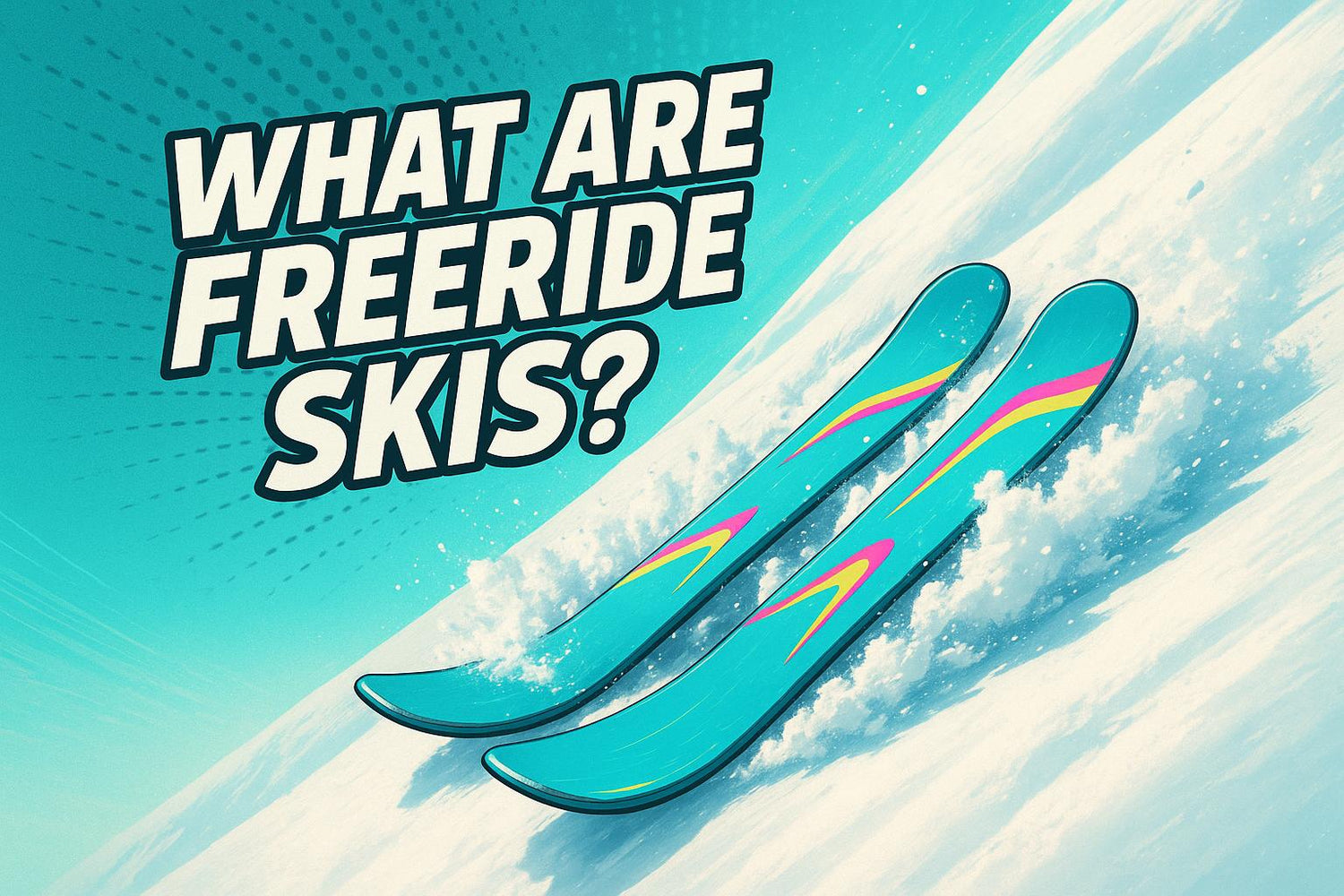

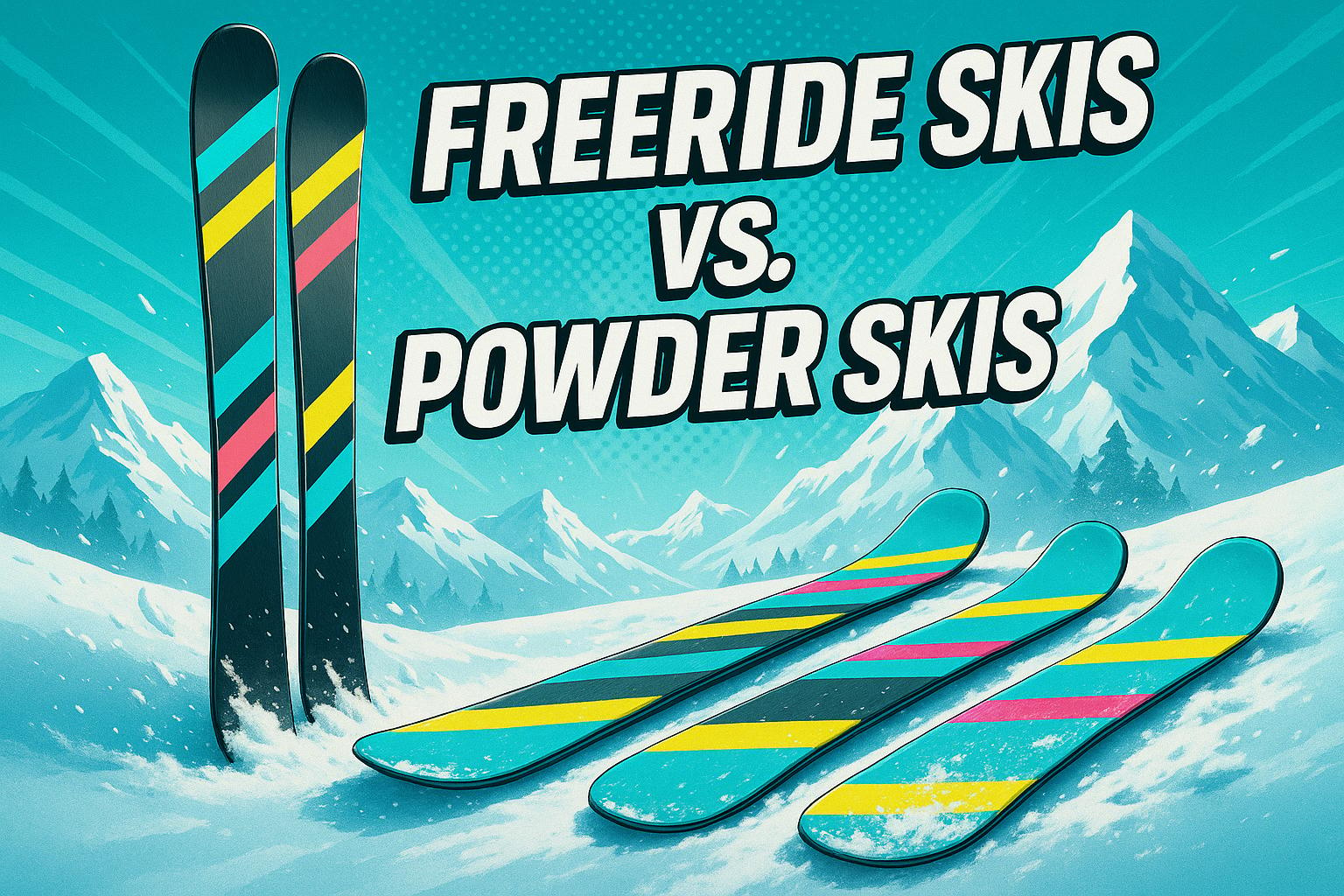

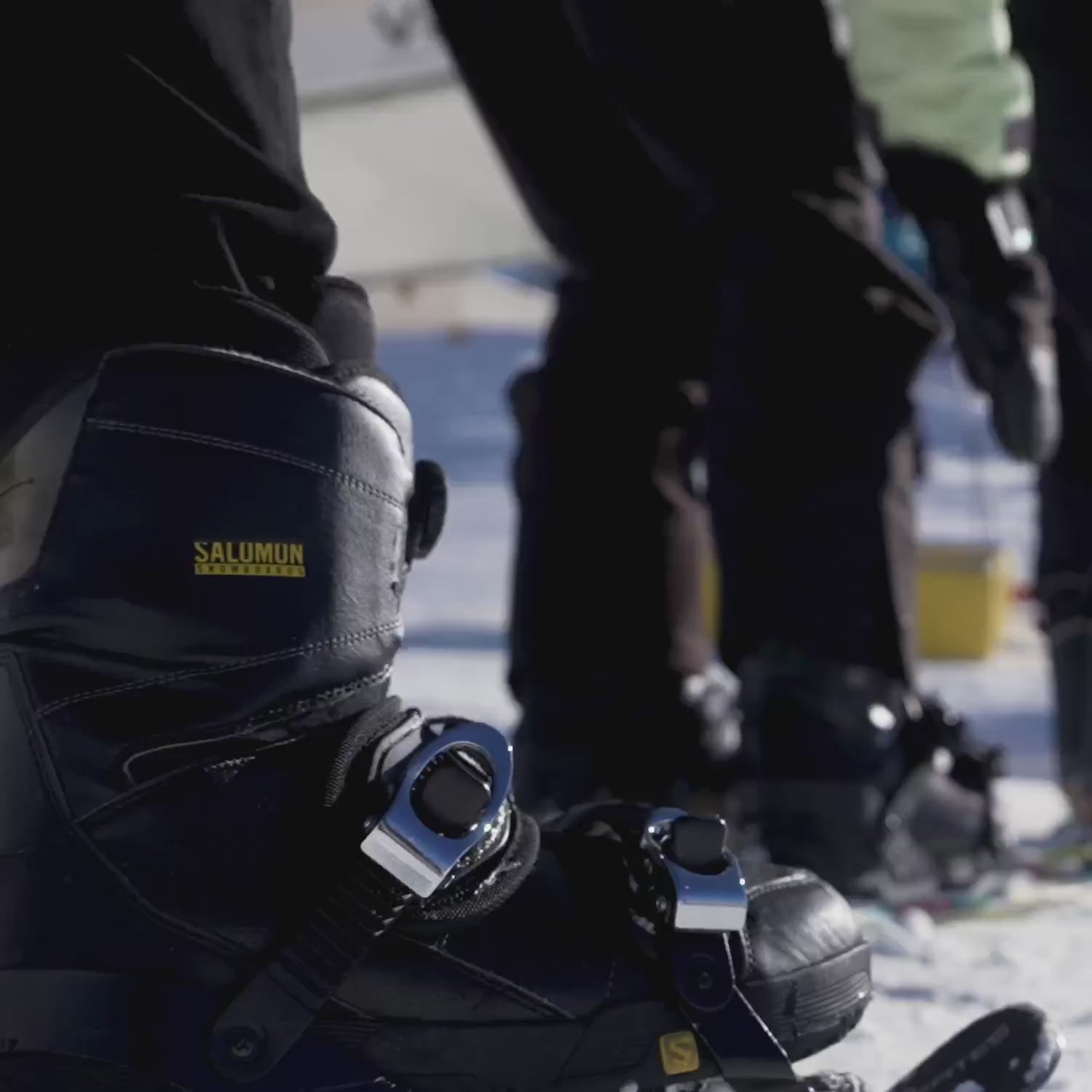

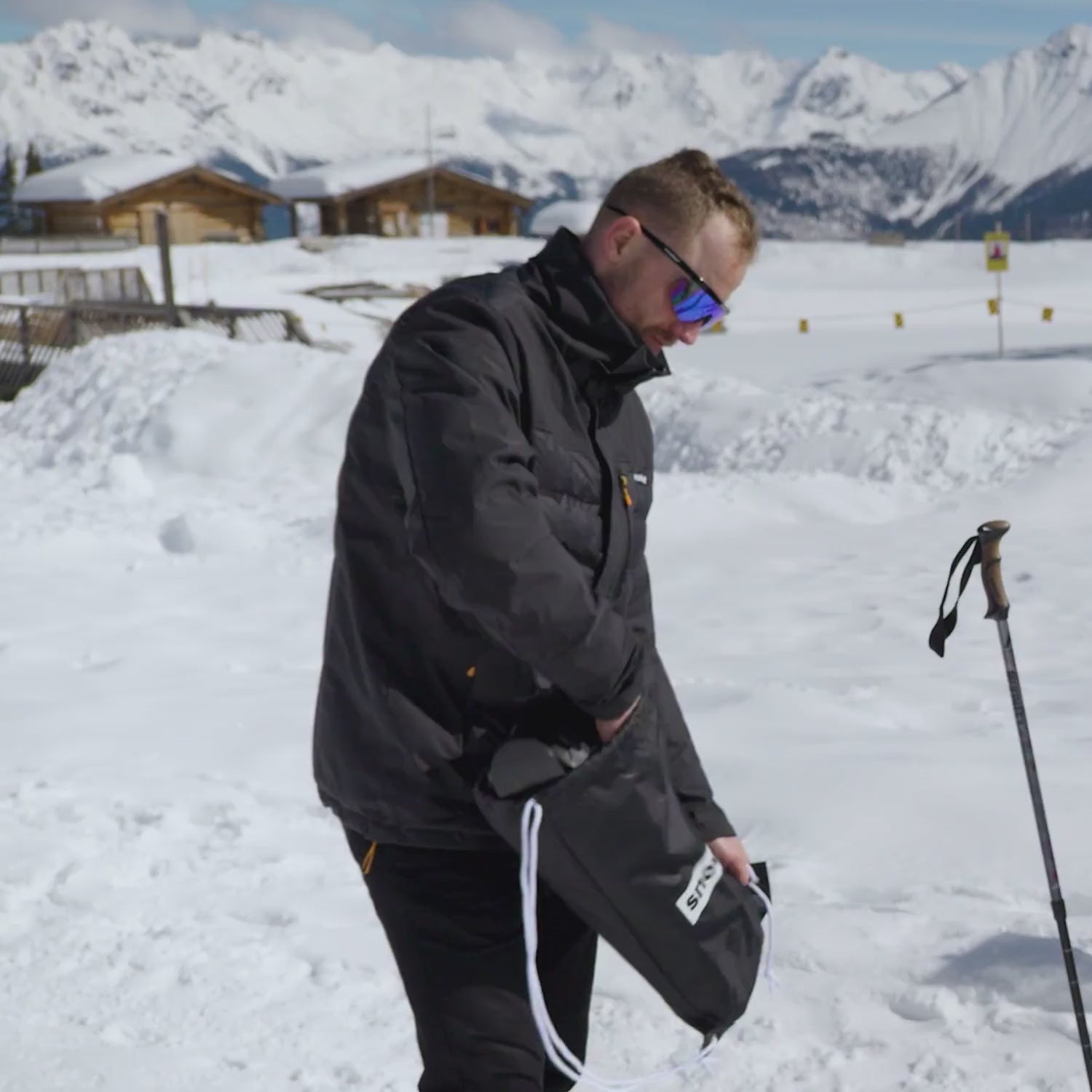
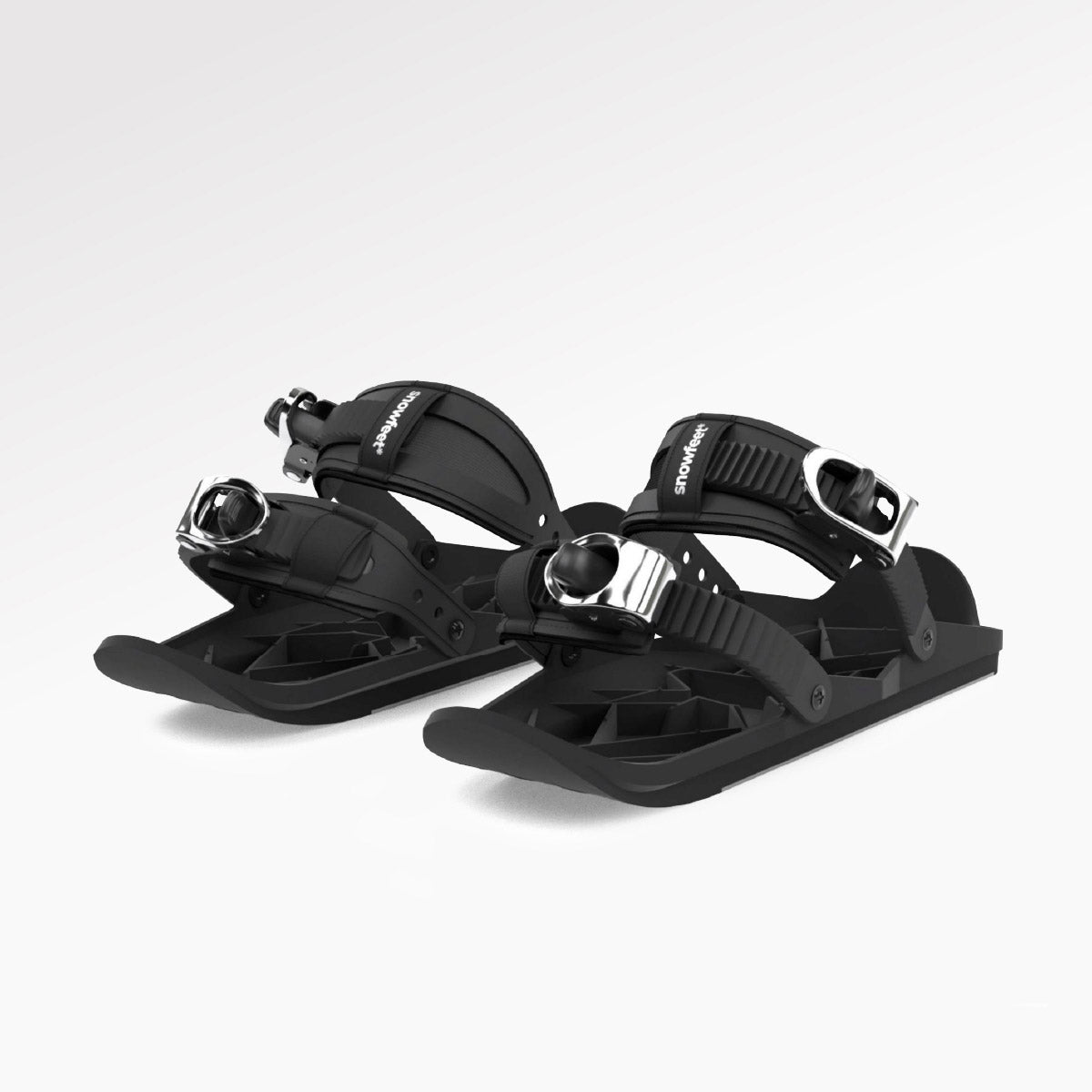
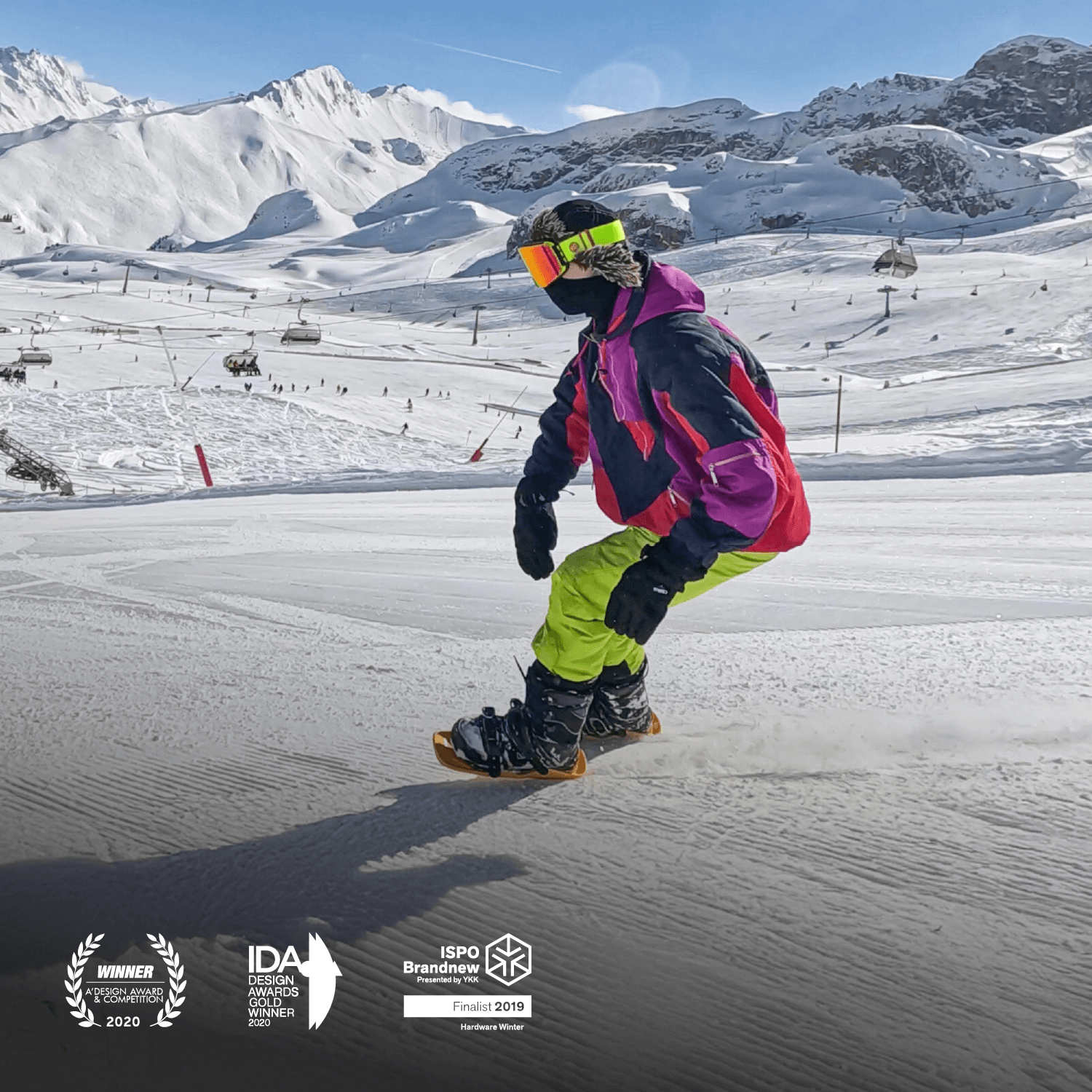
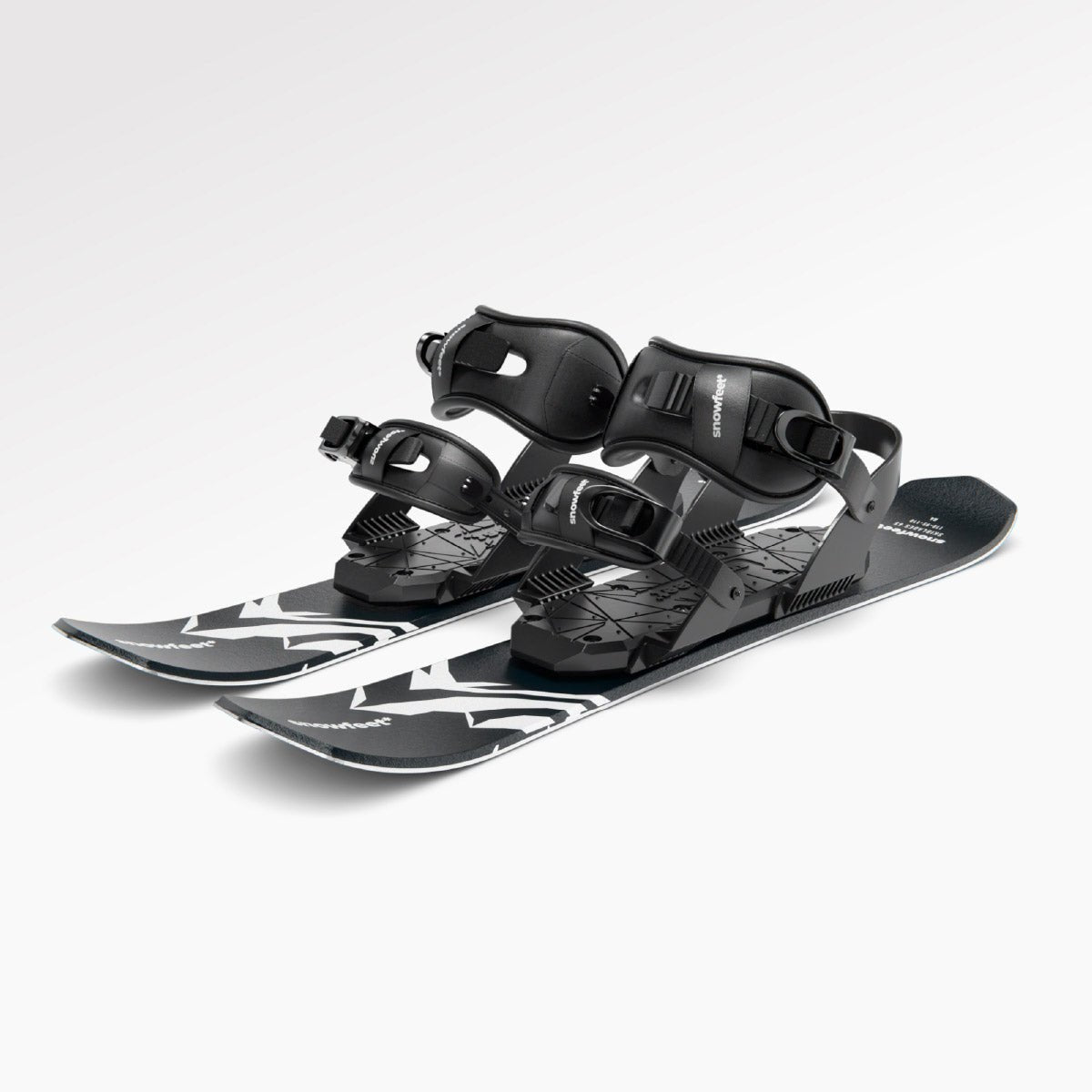
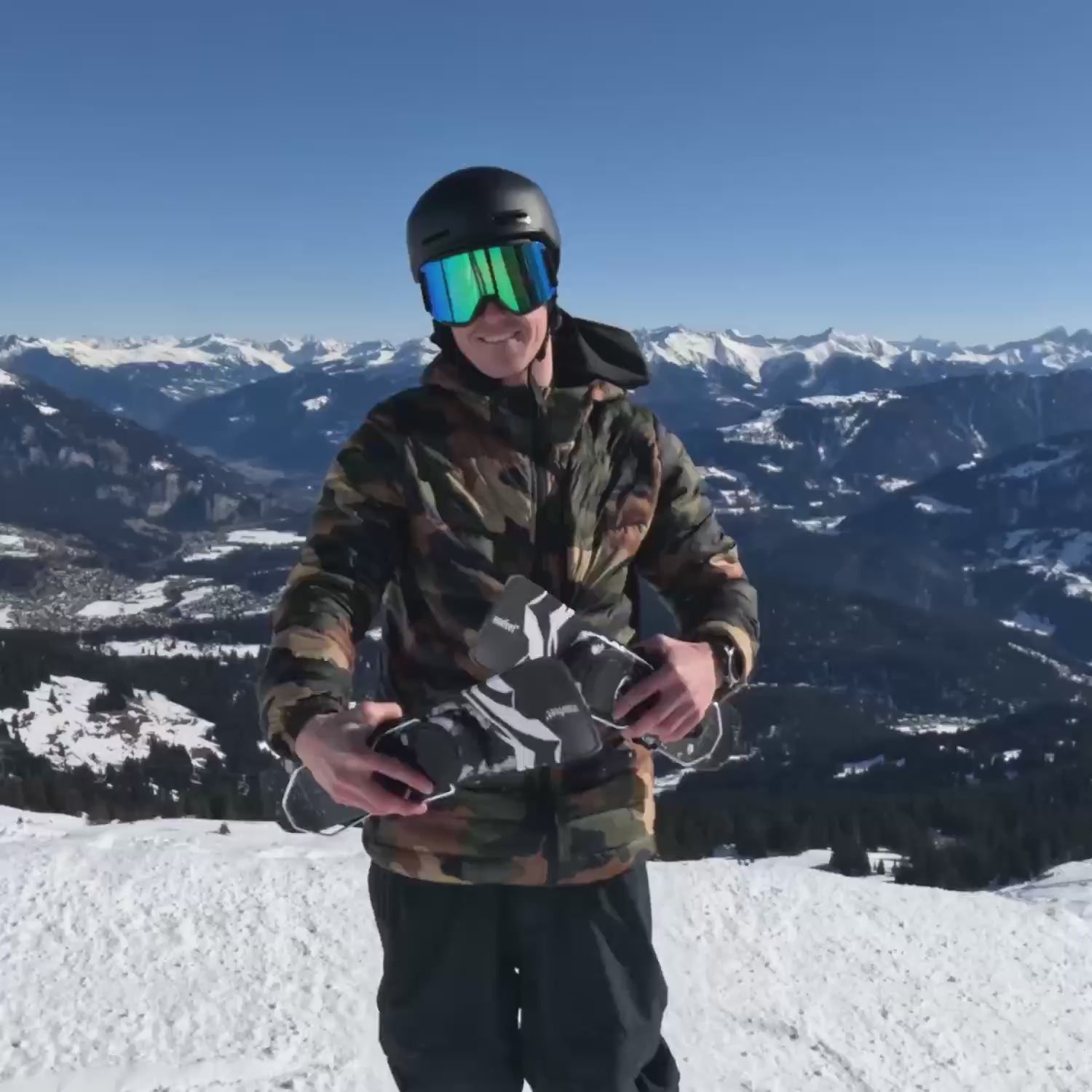
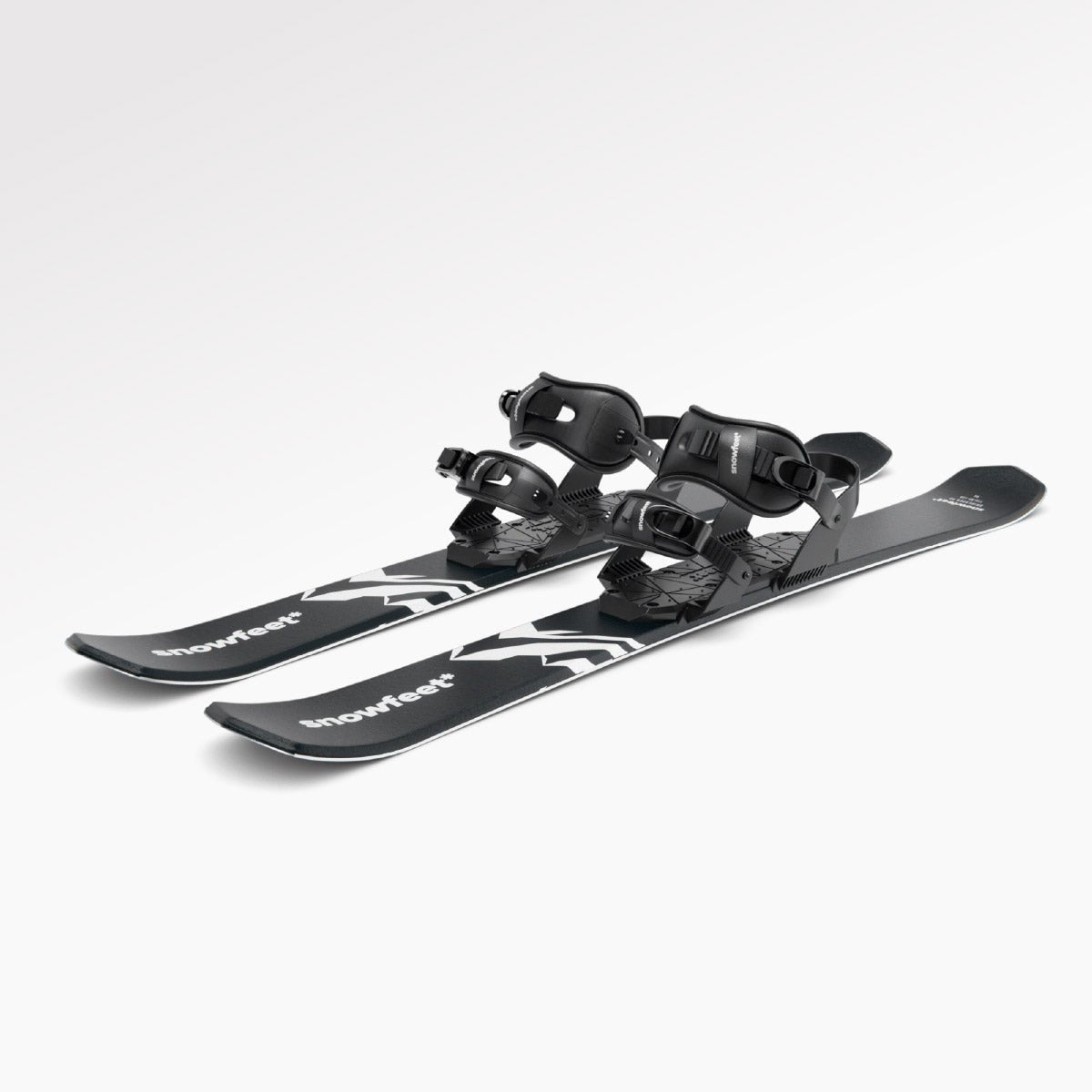
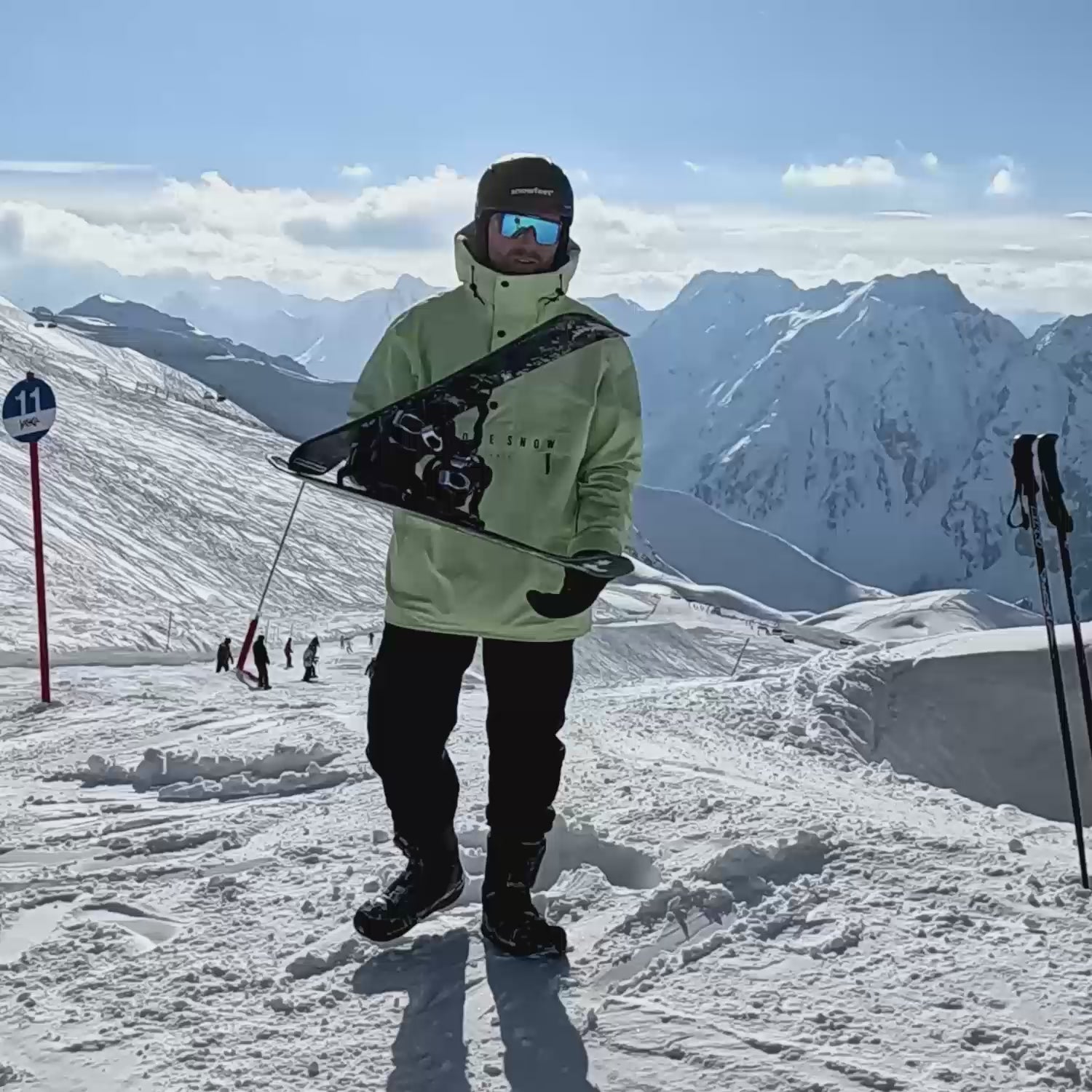
Laisser un commentaire
Ce site est protégé par hCaptcha, et la Politique de confidentialité et les Conditions de service de hCaptcha s’appliquent.